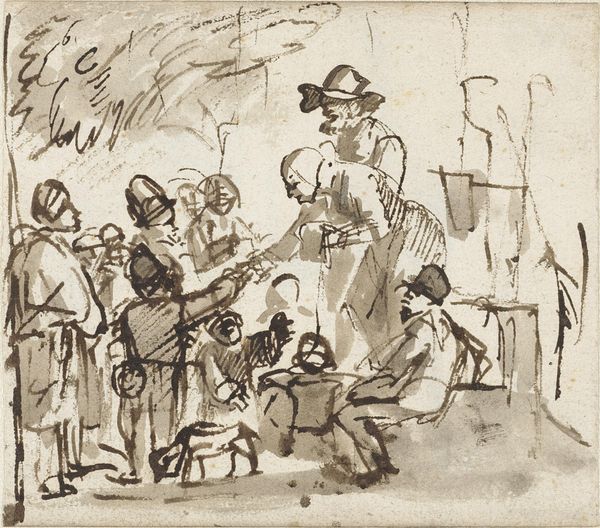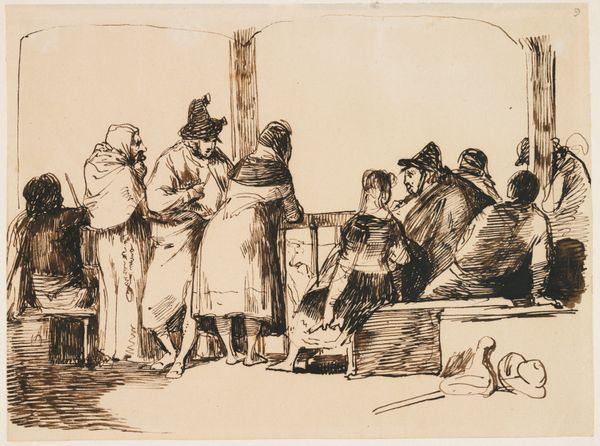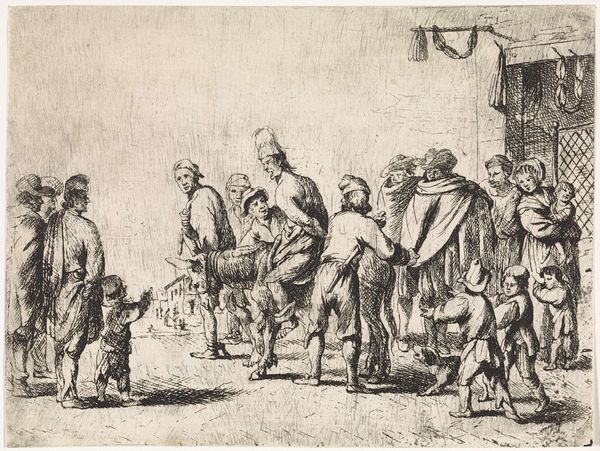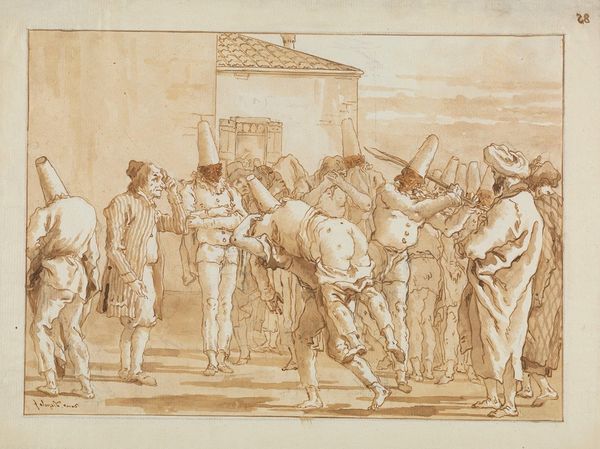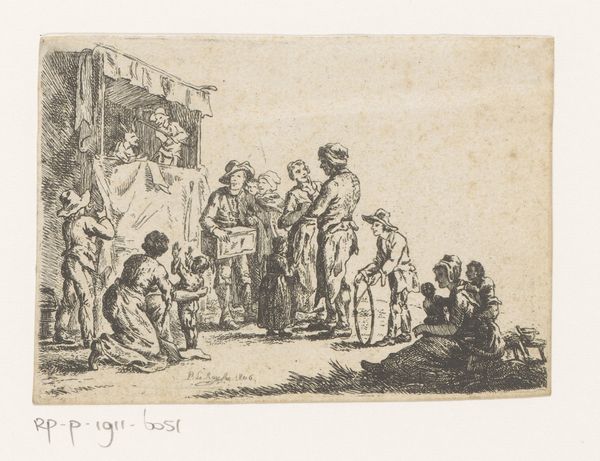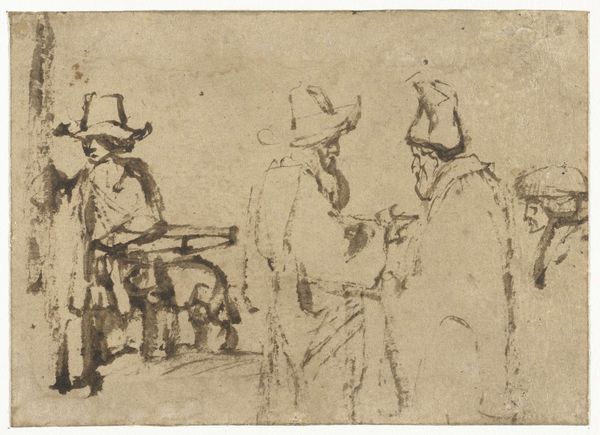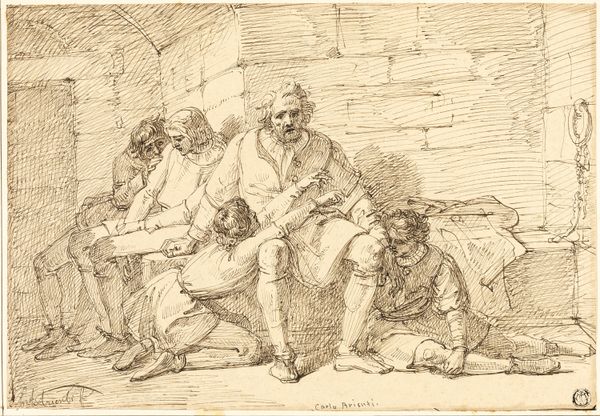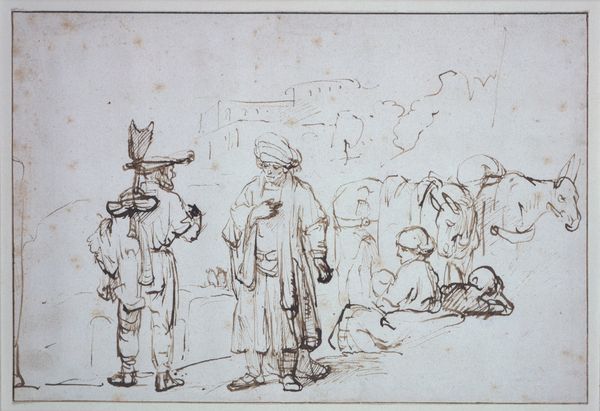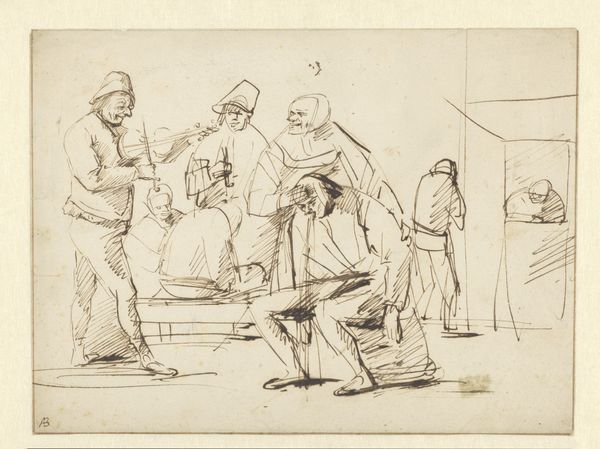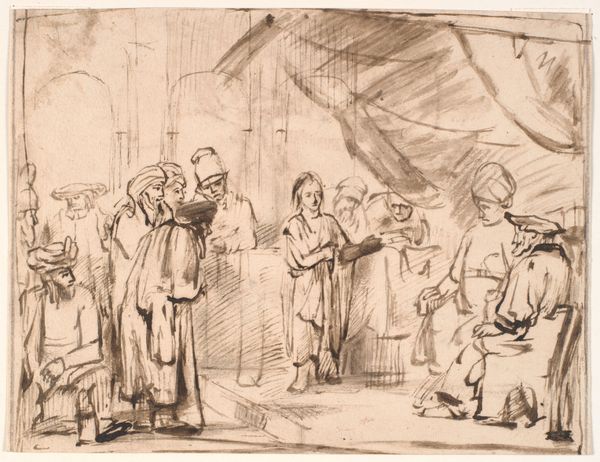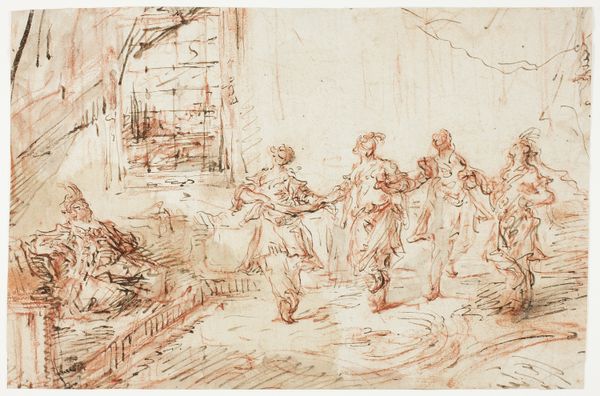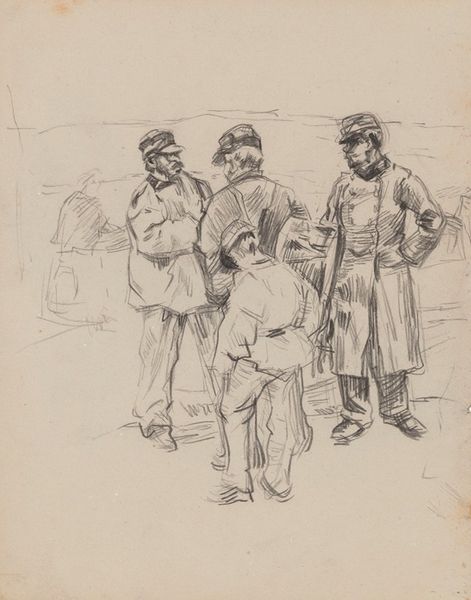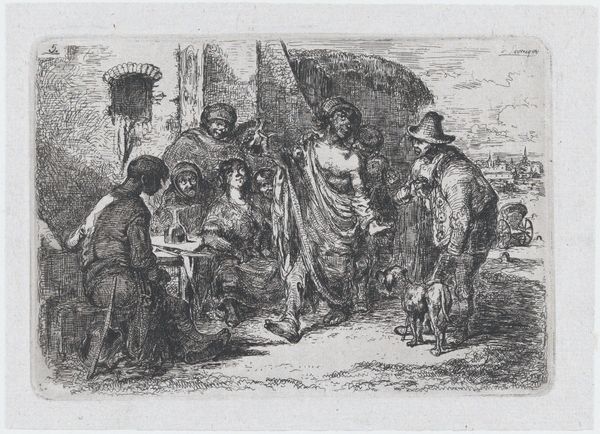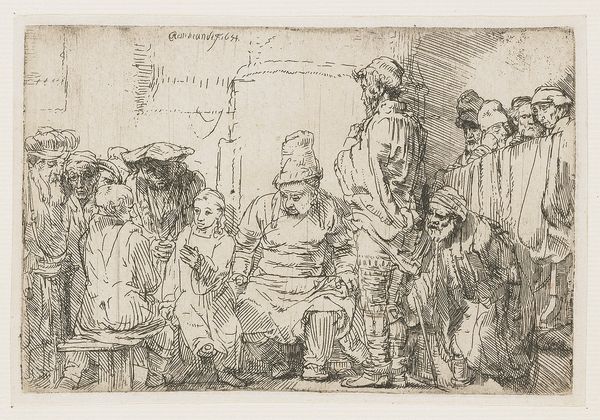
Gruppe von acht Knaben beim Spiel, stehend, kniend und auf einer Balustrade sitzend c. 1765 - 1769
0:00
0:00
Copyright: Public Domain
Curator: Immediately striking is this air of gentle melancholy—even in play, there’s a sense of precarity hanging over these children. Editor: Well, let me orient you to this subtle narrative captured in ink and charcoal. What you are looking at is entitled, "Gruppe von acht Knaben beim Spiel, stehend, kniend und auf einer Balustrade sitzend" – loosely translated, a group of eight boys at play, standing, kneeling and sitting on a balustrade. Created around 1765-1769 by German artist Georg Melchior Kraus. It now resides at the Städel Museum. Curator: That's fascinating—so their posture tells a larger tale then. I see how this connects—children suspended in an indeterminable space and moment in time, reflecting more on the transient, rather poignant quality of childhood itself. What are they doing—playing dice, perhaps? The poses are intriguing—gestures and postures of both submission and assertion. Editor: Yes, and knowing the period, consider how childhood itself was being re-conceptualized, particularly regarding class. Kraus was moving in courtly circles as the official Weimar artist, and the kind of playful genre scene holds both nostalgia and critical distance. Their clothing and arrangement signals a very specific societal context. Curator: I see that—especially how the use of line, particularly the delicate etching of the faces, creates such expressive contrast with the somewhat hurried strokes suggesting garments. It adds another layer, the precious individual versus the implied social standing. The ink wash lends itself particularly well to depicting nuanced psychological spaces and internal reflection here too. Editor: Exactly. Kraus understood the semiotic power of posture, dress and groupings. He presents us not simply with a scene of play but a visual commentary on the complex performance of identity during his time. Remember too, these kinds of images played an increasingly public role at the time; prints circulated readily. Curator: Absolutely, art's role in social commentary began to become prominent! It becomes easier to appreciate the cultural meanings layered within seemingly simple image of children playing. Even now it stimulates discourse of society, identity, memory and transience. Editor: Precisely. We find echoes of the past reverberating in our contemporary concerns about childhood, society, and the human condition. Curator: What starts out as a melancholic portrayal reveals itself as an invitation into an engaging social dialogue, still resonant across the ages. Editor: Indeed; it causes one to wonder: in whose games and narratives are we currently participants, willingly or otherwise?
Comments
No comments
Be the first to comment and join the conversation on the ultimate creative platform.
